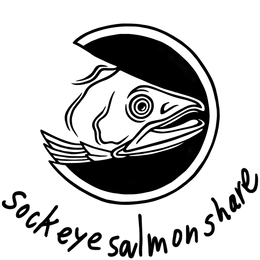WILD vs. FARMED
WHAT SETS WILD SALMON APART FROM THE FARMED ALTERNATIVE?
WILD ALASKA SALMON
Wild Alaska salmon refers to the five species of Pacific salmon that are native to Alaska. Sockeye, coho, chinook, pink and keta salmon all live, breed and thrive in their natural ecosystems of lakes, rivers, streams and the ocean. We harvest and sell Sockeye Salmon, AKA Red salmon. Alaska is known for its abundant, sustainably managed, high-quality salmon fisheries, and it’s one of the world’s largest natural producers of wild-caught salmon.
FARMED SALMON
| WILD | FARMED |
| OMEGA-3 FATTY ACIDS (DHA, EPA, ALA) | |
| Lower fat content; higher ratio of omega-3 to omega-6. |
Higher saturated fat; higher in omega-3s. |
| VITAMIN AND MINERAL CONTENT | |
| High in minerals like potassium, zinc and calcium, as well as vitamin A, D and B12. |
Depending on additives and specific feeding variations per brand, some farmed salmon is higher in vitamins A and D compared to wild. |
| CALORIES AND FAT | |
| Leaner, lower in calories. | Higher saturated fat and calories |
| ANTIBIOTICS AND PESTICIDES | |
| No exposure | Fish farms use antibiotics and pesticides to prevent disease and treat parasites. |
| ANTIOXIDANTS | |
|
Astaxanthin is an antioxidant that wild salmon gain based on salmon’s natural diet of zooplankton, shrimp, herring, and krill. It supports healthy heart, brain, vision, skin, joints, gut and bones. |
Contains synthetic astaxanthin for coloring. |
